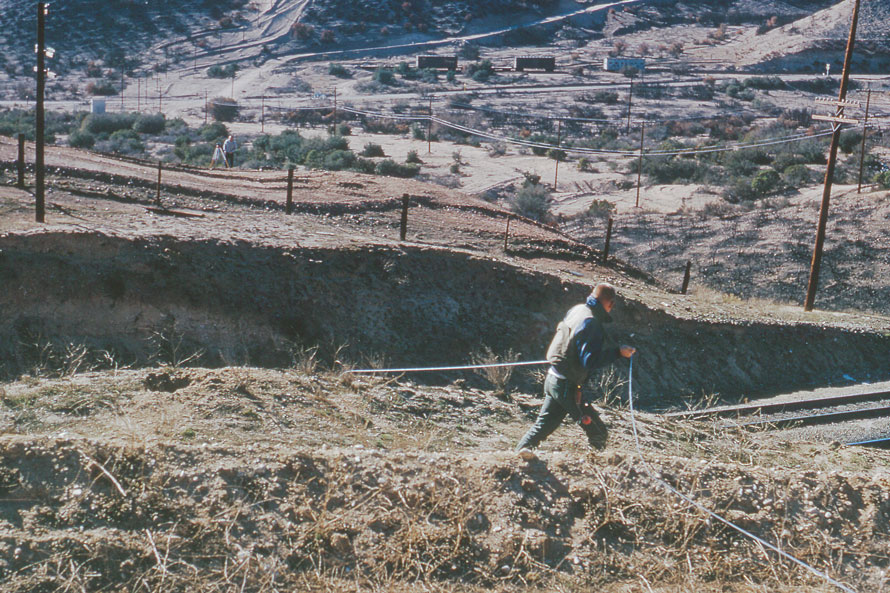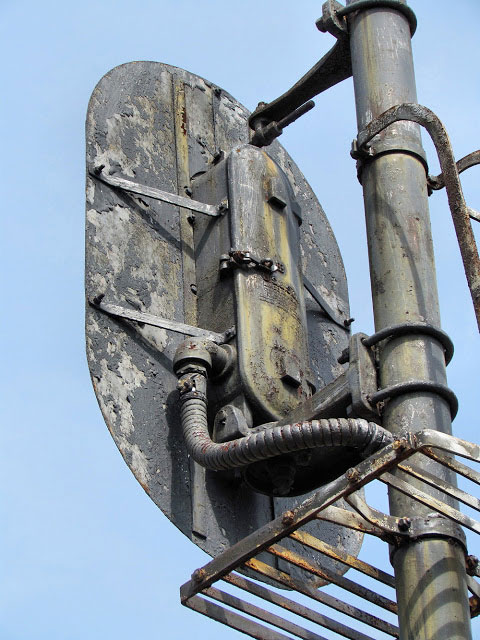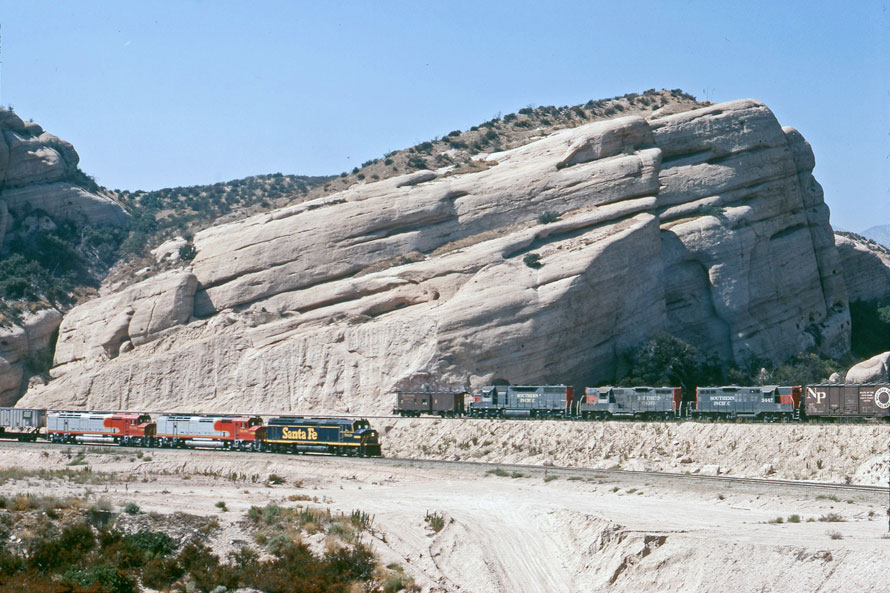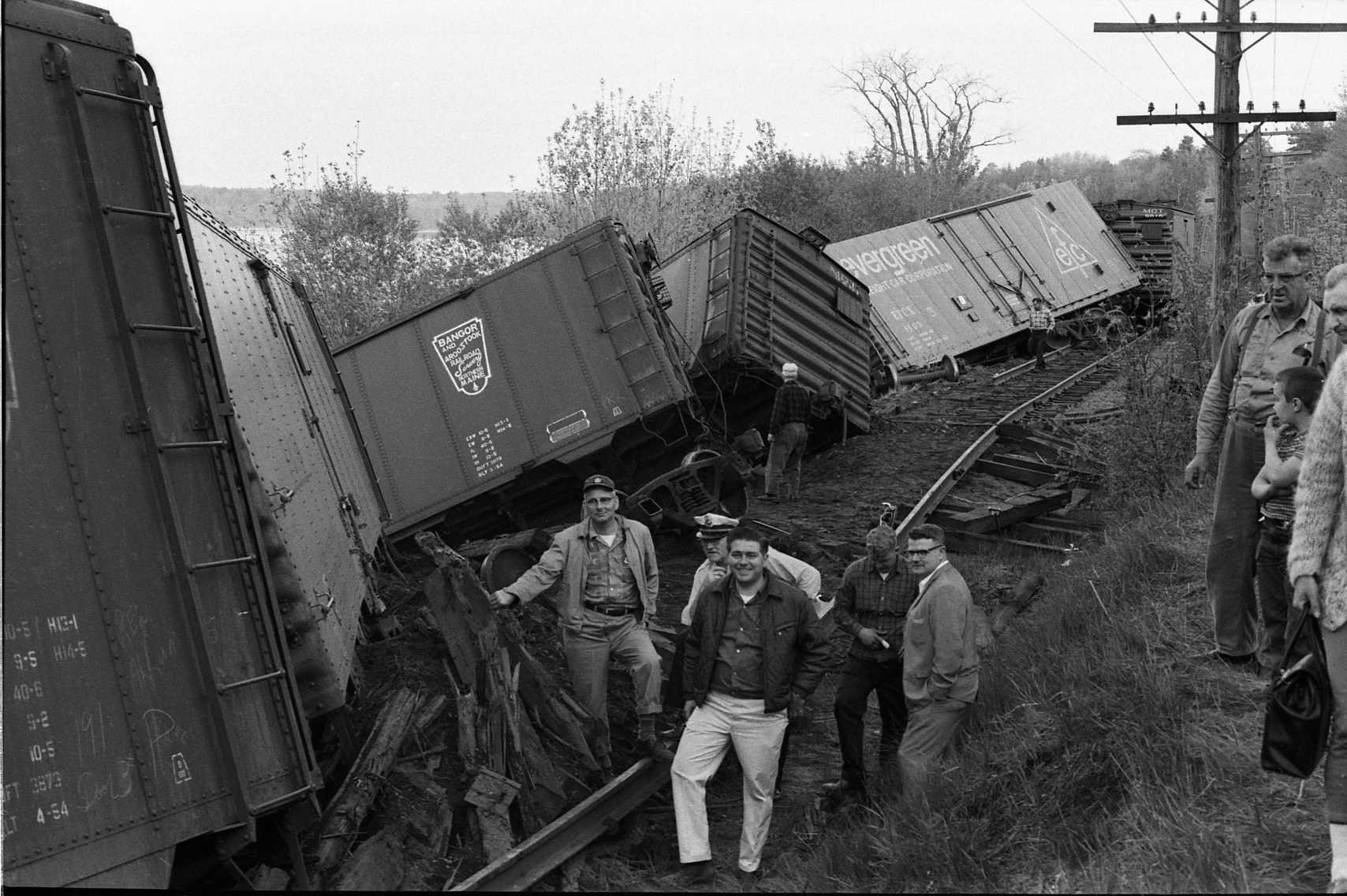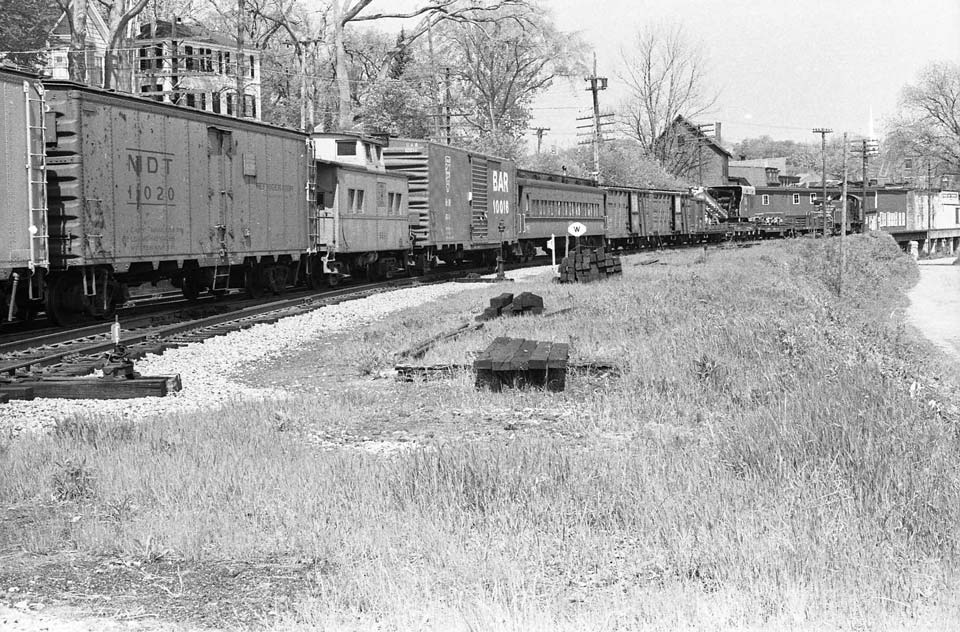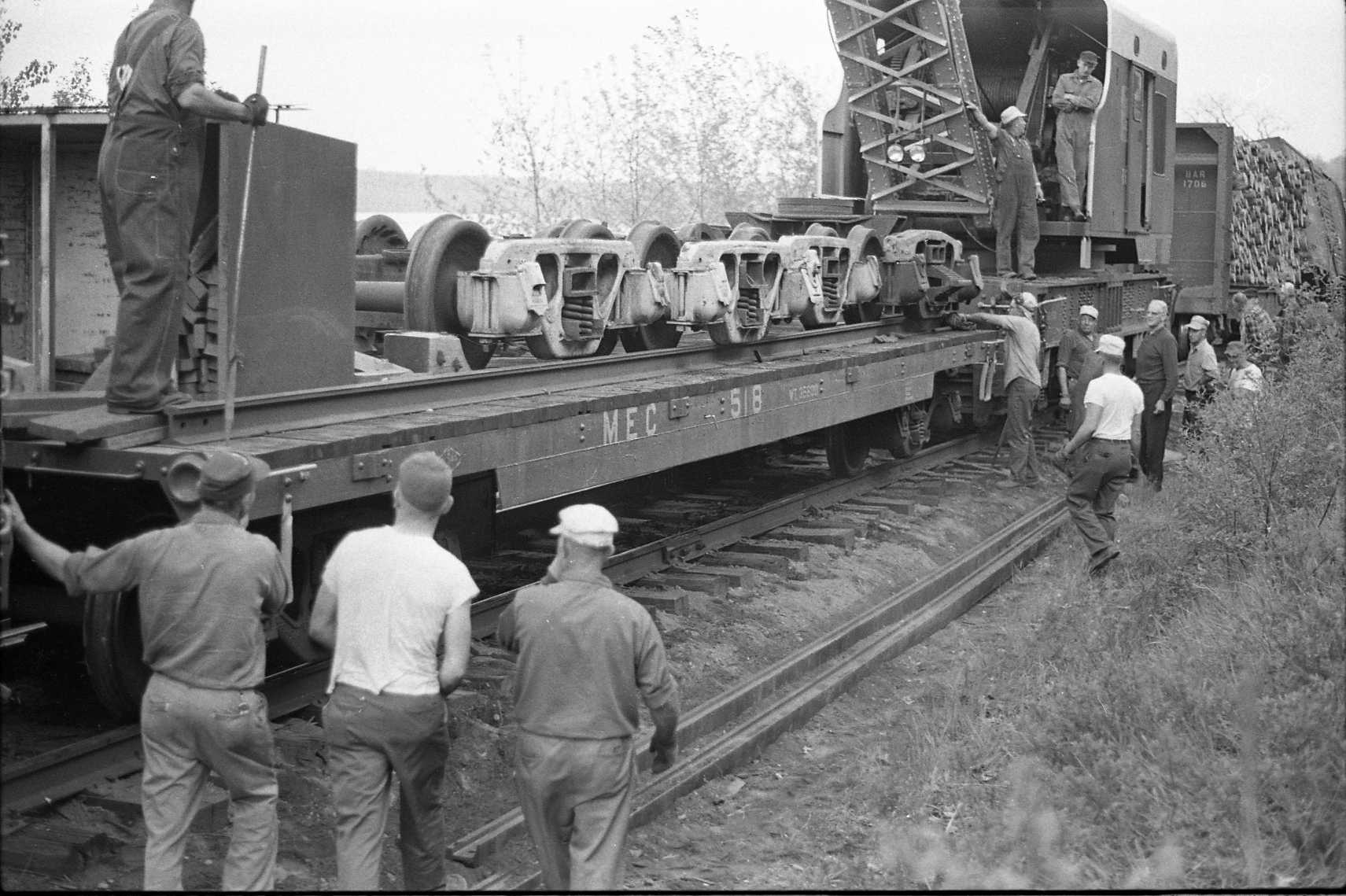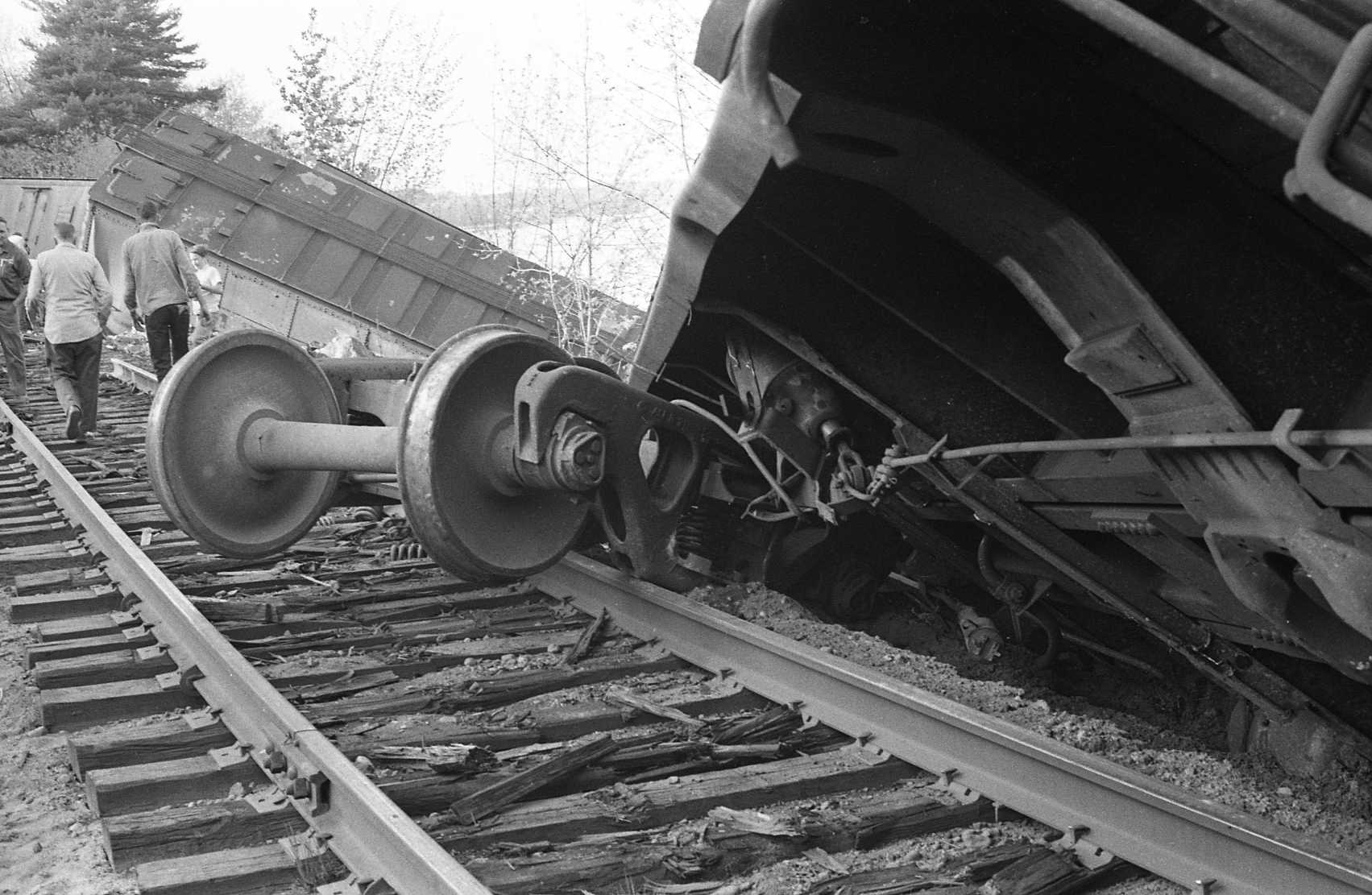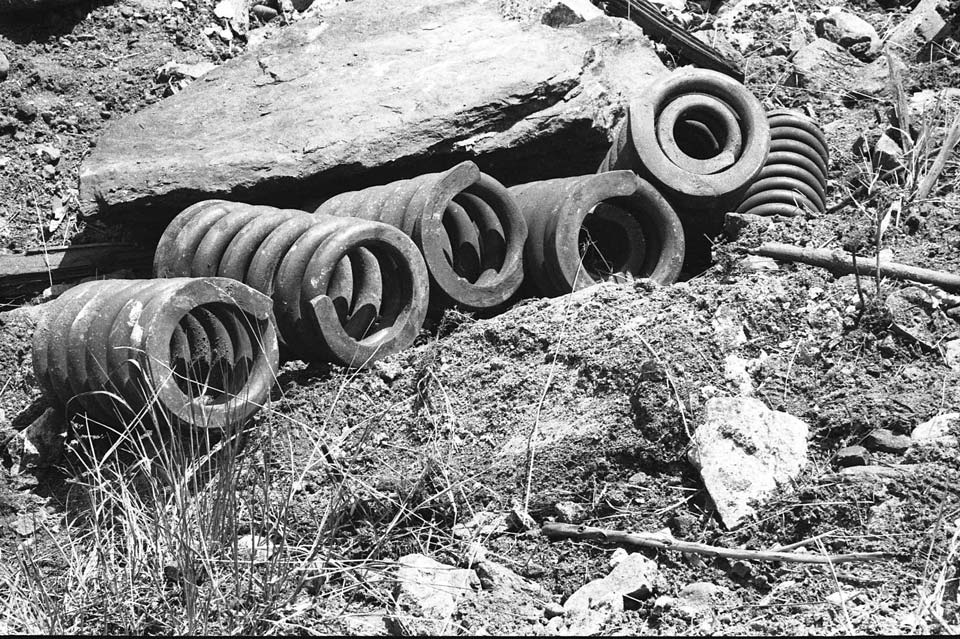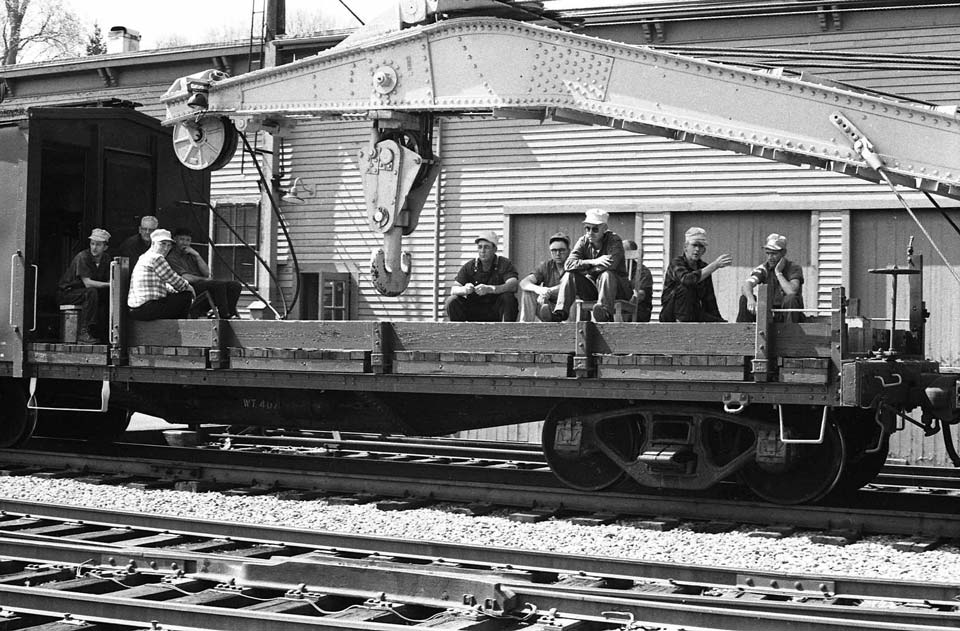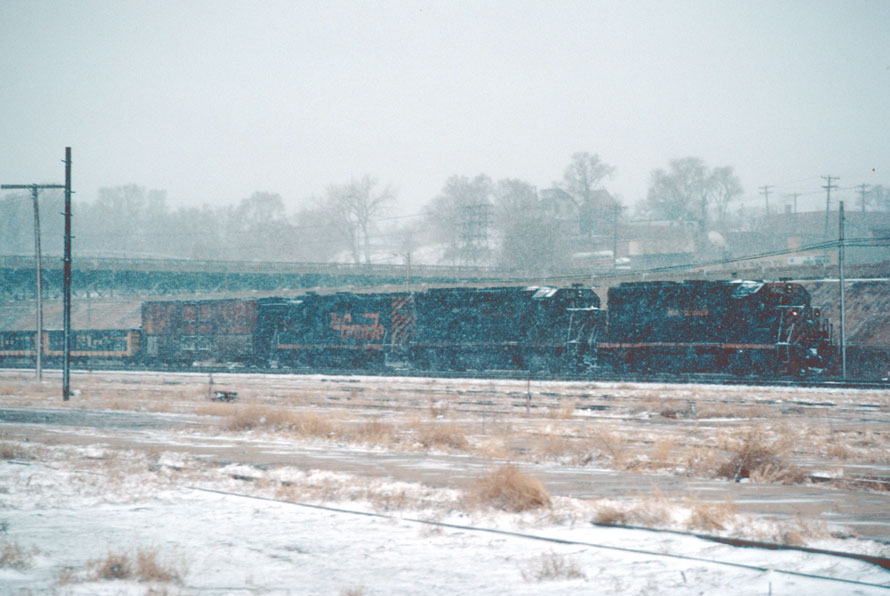
I had been traveling out to the Transportation Test Center near Pueblo for several years as part of my work with the Association of American Railroads (AAR) Research & Test Dept. The railroad activity around Pueblo fascinated me and I thought it would be interesting to see the Royal Gorge from track level. A friend on the D&RGW, Jim Ozment, offered to take me on a hi-rail trip up through the Gorge from Pueblo to Salida, Colorado. It was March 31, 1989 and it had really snowed the night before. Jim couldn’t get down from Denver, but the Roadmaster in Pueblo, Robert Valdez, was ready and waiting. We left the Pueblo yard shortly after it was light. It turned out to be an especially scenic ride because there was snow all the way up to Salida. No trains were scheduled in either direction that morning, so we had the railroad until lunch time. Robert patiently answered my questions about what his job entailed and how the railroad was maintained, and he explained some of the history of the line. But, for the most part, we just rode along looking for any trouble like fallen rocks or track defects. It was quiet and the snow made the incredible mountain scenery, track, and river even more stunning.
Read more